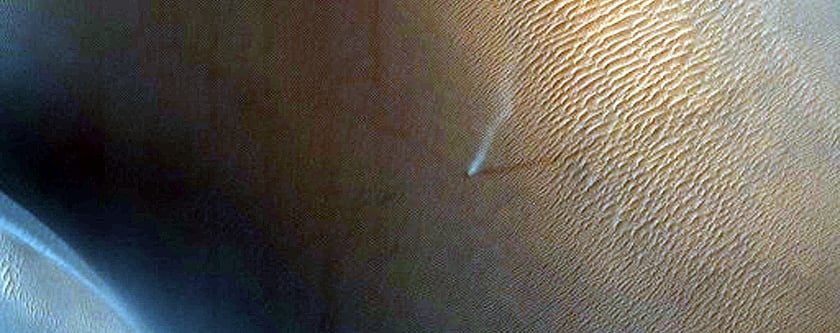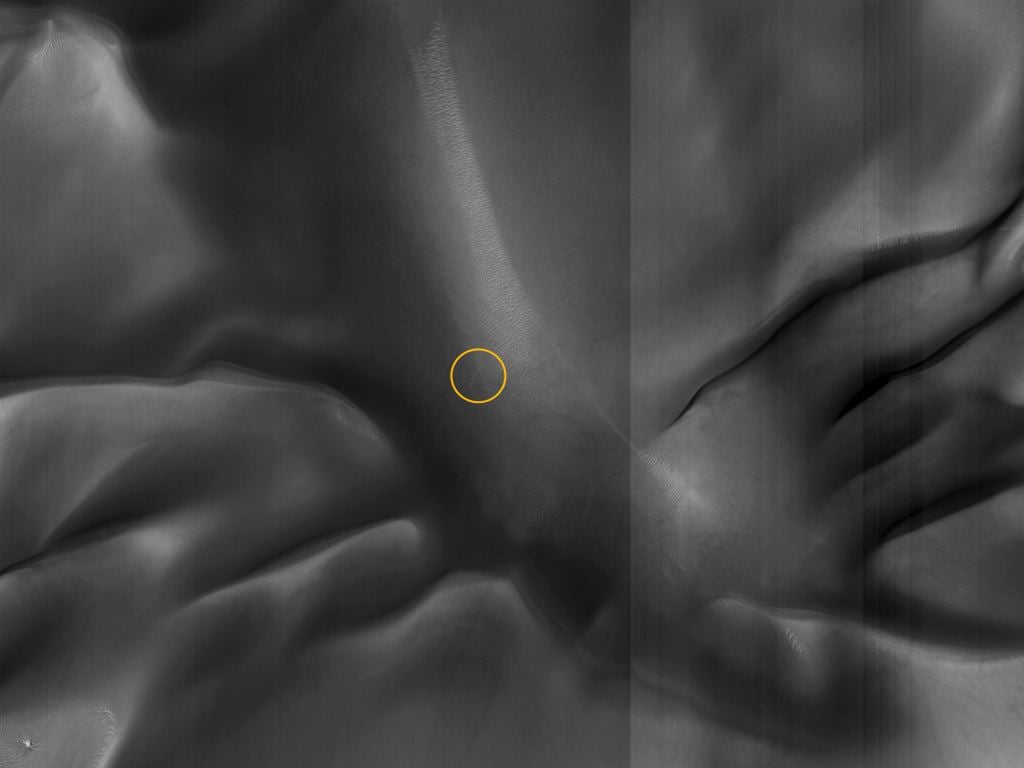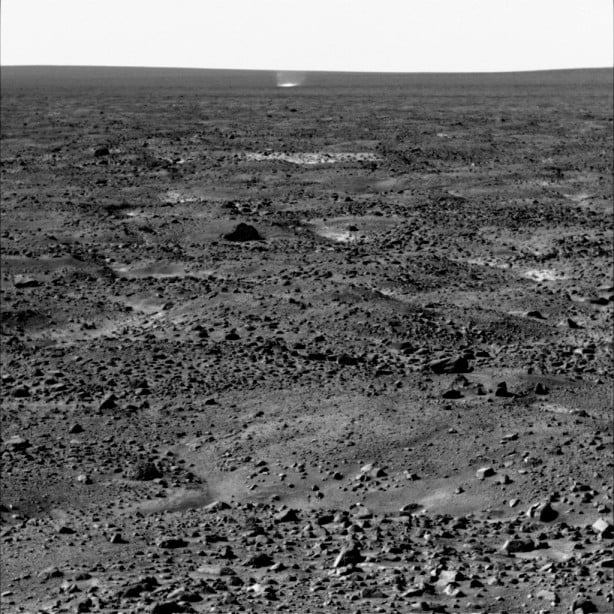Mars has a great combination of dust and wind. The result of that combination is often dust devils.
The HiRISE camera on the Mars Reconnaissance Orbiter has captured several dust devils in action, including this lonely whirling dust cloud traversing across a small crater on the Red Planet.
The orbiter's main objective of this observation, the HiRISE science team said, was to track changes over time of the dunes north of Antoniadi Crater. While HiRISE often catches nature in action (such as an avalanche on Mars), in this case, it's a well-defined dust devil traversing the dunes, leaving exposed, darker subsurface material in its wake.
Scientists say that dust devils form when sunlight warms up the air near a dry surface. Warm air then rises quickly through the cooler air above and starts spinning, causing a forward motion. These spinning columns of air become visible by the dust they pull off the ground. The spinning, forward-moving cell picks up dust and sand as it advances, leaving behind a "clean" track.
This black & white full image from HiRISE is less than 5 km across, while the lead image in enhanced color is less than 1 km across.
Over the years, scientists have monitored the appearance of dust devil on Mars. They have seen that on each Martian spring or summer day, dust devils can begin appearing about 10 AM (local time) as the ground heats, and start abating about 3 PM as the ground cools. The dust devils typically last only a few minutes.
On Mars, dust devils can be up to 20 kilometers (12 miles) high, as the one in the image above captured in action by HiRISE in 2012. Dust devils have been credited with unexpected cleanings of solar panels on the Mars Exploration Rovers. Right now, scientists and engineers with the InSight mission are hoping a dust devil will come clean off the lander's solar panels so they can return to full scientific capabilities.
 Universe Today
Universe Today



